 Internal Communication Pains
Internal Communication Pains
Having a diverse, distributed workforce can be a challenge. It has many advantages. But do you know how to effectively engage your employees? We’ve got lots of tips.

.png)
Strategy is an important component of internal communications. Ensure you’re communicating through the right channels at the right frequency with our Internal Communications Channel Audit worksheet.
Access NowThe modern workplace is undergoing a seismic shift. The days of homogenous teams confined to physical offices are fading fast. Today's workforce is a tapestry of diverse backgrounds, skills, and experiences, often working remotely from across the globe.
This shift presents both exciting opportunities and unique challenges. On the one hand, a diverse, distributed workforce offers access to a wider talent pool and fosters innovation through the exchange of varied perspectives. On the other hand, keeping a geographically scattered team connected, motivated, and capitalizing on their full potential requires a strategic approach.
Communicating to a diverse, often distributed workforce, is a challenge internal communicators face every day of their working lives. So, it stands to reason that this is one of the top ten challenges highlighted by Maddy Rieman, head of Customer Success at Cerkl, at our recent workshop at the 11th Annual Strategic Internal Communications — West Conference in San Francisco.
If you're looking to unlock the true potential of your diverse, distributed workforce (and who isn’t?) then look no further! In this post, we’re going to examine the distributed workforce model. We’re going to consider the challenges that any diverse, distributed workforce, including hybrid and remote employees face. We outline Maddy’s workplace best practices and suggest 10 key strategies to keep your teams engaged, productive, and thriving in today's dynamic work environment. We also suggest the most efficient tools for the typical diverse and distributed workforce.
“Focusing on who your employees are, what tools and resources they interact with on a daily basis, and how they prefer to obtain information to be successful in their role, is vital to building a strategic comms plan that prioritizes the diversity of any workforce.” Maddy Rieman
While a distributed workforce is commonly diverse, the concepts of a diverse workforce vs a distributed workforce are not exactly the same.
Fundamentally:
However, many, if not most, companies with distributed teams actively seek diversity to benefit from a wider talent pool.
“Generally speaking, every company has a diverse workforce,” says Maddy. “All employees are unique individuals with different needs, wants, interests, and preferences regarding their communications.”
She says most people define a diverse workforce as being “composed of differing groups of their employee base.” These include::
Whoever they are and wherever they are, communication is vital for any workforce.
In this context, it is important to “understand that your manufacturing employees don’t have access to a company-provisioned phone or computer. In contrast, corporate employees do have those resources available to them. And even more so, be aware that in the plant facilities, there is only one computer accessible to the over 400 employees reporting to that location is crucial information to understand better how you should be communicating and informing these employees.
“I hear that most communicators feel overwhelmed by the notion of this concept. But, in reality, no communicator will be able to adequately develop a unique version of a comms that fits the needs of all of these diverse workforces.”
She advises communicators to identify “small opportunities to optimize processes to get closer to a more cohesive employee experience across these groups of individuals.”
Of course, when companies focus on creating a diverse workforce, they also look at the backgrounds, experiences, and skills of new employees. Additionally, many prioritize diversity, equity, and inclusion (DEI), recognizing it gives them a competitive advantage. McKinsey & Company’s The State of Organizations 2023 report states that companies with executive teams that embrace ethnic and gender diversity are more profitable than those that don’t.
Upgrade your company’s internal comms to enhance employee communication
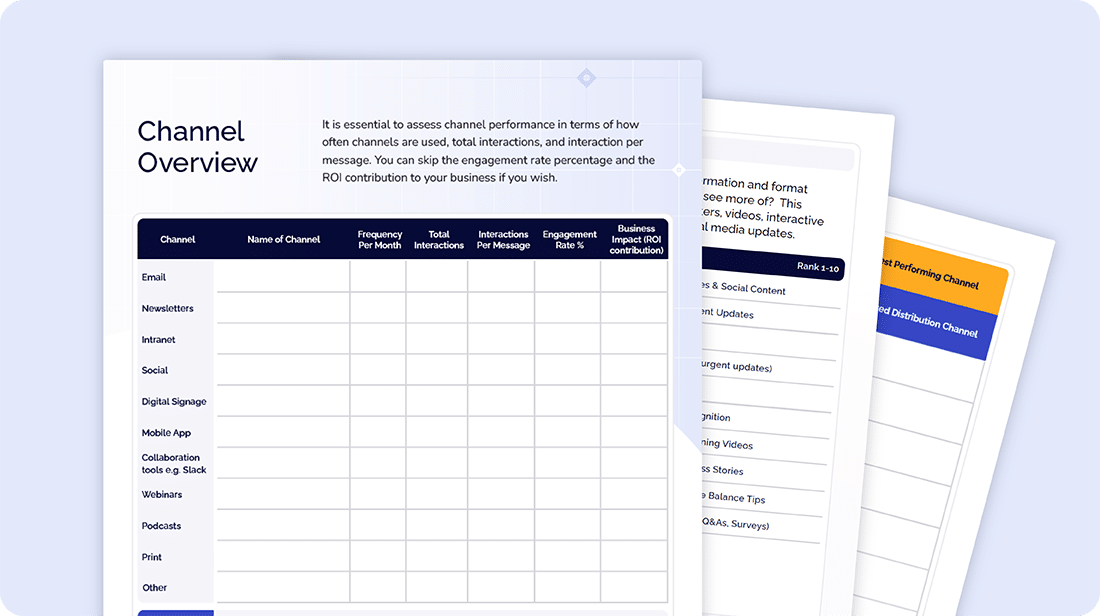
A distributed workforce model is where employees are not confined to a traditional office environment or specific location. Instead, the workforce is spread out across multiple locations, which can include different cities, countries, or even continents. This model leverages modern technology like cloud computing, collaboration tools, and communication platforms. These enable seamless interaction and workflow among team members, regardless of their physical location.
“As technology emerges that eliminates the residual barriers to more distributed and asynchronous work, it could become possible to move more types of jobs overseas, with potentially significant consequences.”
McKinsey
Ultimately, the distributed workforce approach offers flexibility and autonomy to employees. It allows them to work from the environment that suits them best, whether it's from home, a co-working space, or a local cafe. This model can lead to increased productivity and access to a wider talent pool. It can also result in operational cost savings for companies while supporting a good work-life balance for employees.
McKinsey’s The State of Organizations 2023 reports that 71% of employees who prefer hybrid work say they’re likely to look for new job opportunities if employers discontinue remote work models. Additionally, during the height of the epidemic, 58% of executives said the productivity of individual employees improved. Most organizations also experienced higher employee engagement, team productivity, and customer satisfaction.
An OfficeSpace post, Distributed work: 5 ways to help distributed teams by CJ Frey states that the ongoing rise in distributed work is “one of the biggest impacts the pandemic has had on working.”
“Since the pandemic forced many companies into a distributed hybrid work model virtually overnight, this remote working ‘experiment’ has been an overwhelming success.” CJ Frey
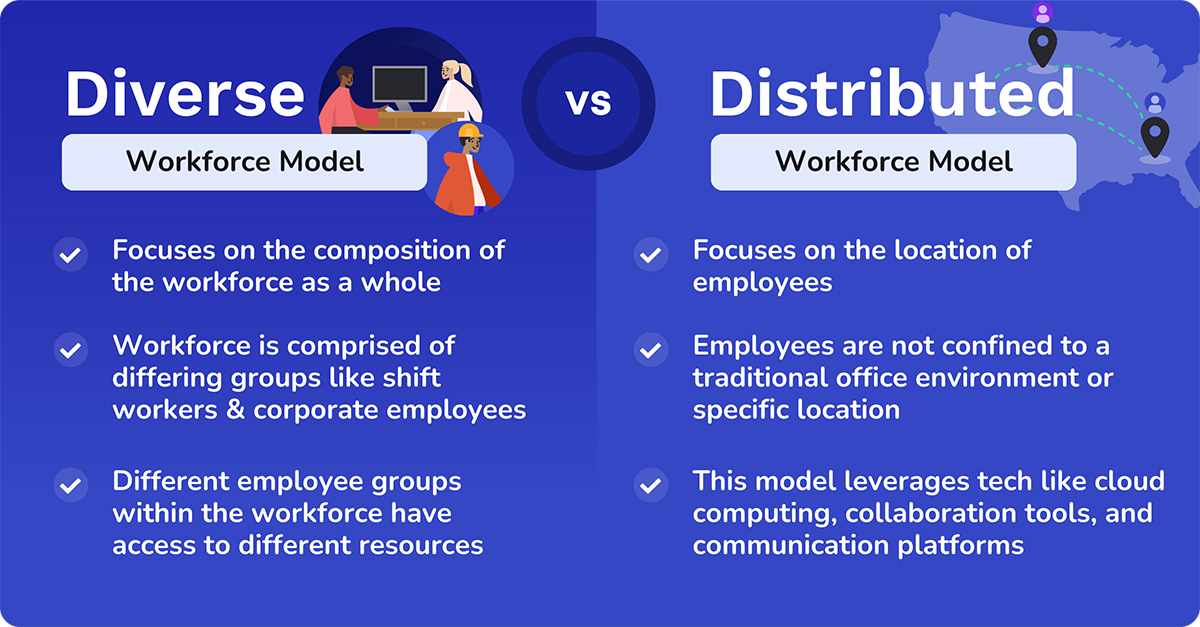
There’s no doubt that the workforce that incorporates DEI is here to stay. McKinsey’s 2023 report states that 70% of the respondents to their survey have “transformative DEI aspiration.” The only problem is that less than half of them (47%) haven’t developed the infrastructure to make their aspirations happen.
But is the distributed workforce model similarly popular?
Our perception is that in today's ever-evolving workplace landscape, the concept of a distributed workforce has taken center stage. With the advent of robust communication channels like video conferencing, companies can now operate without a traditional office, tapping into a broader talent pool that spans across different time zones. This shift allows organizations to become more agile. It also contributes to enhanced employee satisfaction as individuals enjoy the flexibility of working from locations that suit them best.
Organizations have witnessed firsthand the benefits of a remote distributed workforce, including reduced costs on physical office space and the ability to attract diverse talent. These advantages align with the shift towards a more globalized economy, where the capability to connect with customers and team members anywhere is crucial.
Gallup’s research reveals that the future of the office is hybrid. Their data shows:
The success stories of fully remote teams, alongside the increasing number of companies adopting distributed workforce strategies, corroborate the sustainability of the distributed workforce model. As such, the rise of distributed workforces appears to be a permanent change in how the modern work environment will be structured.
We’ve examined the distributed workforce in some detail, and we’ve touched on the ongoing importance of the hybrid model. But how do remote and hybrid workforces differ from the distributed workforce?
We’ve said that a distributed workforce is characterized by team members working from various locations. This could be their homes, co-working spaces, or any location outside of a central office. The model leverages technology and project management tools to maintain seamless communication and collaboration across different locations. It also focuses on maximizing the potential of a globally distributed team without the need for a single physical office space.
The OfficeSpace post mentioned above quotes Anthony Wing Kosner, editorial content director at Sequoia Capital.
“The distributed work paradigm means that where you’re located should not be a factor in your performance and participation.” Anthony Wing Kosner
It’s that simple. Furthermore, remote and hybrid models are inherently part of a distributed workforce model.
Generally, remote workforces have employees working outside the traditional office but still operating within the same country or time zone. Teams may have a central office that acts as the hub. But remote workers do not regularly utilize the office space.
A hybrid workforce blends elements of both remote and on-site work in a traditional office setting. In a hybrid model, some employees work in the office, and some work remotely. This arrangement offers flexibility, aiming to balance in-person collaboration with the benefits of remote working. Businesses can tailor the hybrid approach to suit their specific needs, adapting the balance of remote and office-based work over time.
Ultimately, the remote and hybrid options broaden the scope of a distributed workforce. For instance, some employees might have access to satellite offices or choose to work from co-working spaces from time to time.
Upgrade your company’s internal comms to enhance employee communication

There will always be challenges. For example, whatever workforce model you’re dealing with, it’s vital to maintain employee engagement and motivation. It is also crucial to build trust using effective communication.
In a diverse workforce, it’s essential to overcome unconscious bias and break down communication barriers. Different cultural backgrounds, communication styles, and even languages can lead to misunderstandings and hinder effective communication. Unconscious biases based on factors like race, gender, or age can lead to unequal opportunities and hamper the full potential of diverse teams.
In a distributed workforce, building a strong sense of community and shared values can be challenging when team members are geographically dispersed and lack regular face-to-face interaction. Also, ensuring effective collaboration and communication across different time zones, work schedules, and communication tools can be complex.
While the benefits of a distributed workforce are significant, organizations face several challenges. One of the major hurdles is maintaining clear communication across various time zones. Teams must navigate time zone differences to collaborate effectively, which can complicate meeting scheduling and real-time project management. This necessitates the adoption of smart workspace solutions and virtual team tools to ensure timely and efficient collaboration.
Beyond communication, nurturing a cohesive company culture and ensuring employee engagement in a diverse, distributed workforce requires intentional effort. The lack of physical presence and reduced social interaction can lead to feelings of isolation among remote team members, especially when DEI is a factor.
According to Owl Labs’ State of Hybrid Work 2023 study, 20% of US workers don’t feel connected to the company or culture. Additionally, 18% don’t feel connected to their teams and 15% don’t feel valued. Organizations need to develop innovative ways to foster social connections to maintain a sense of belonging among distributed employees.
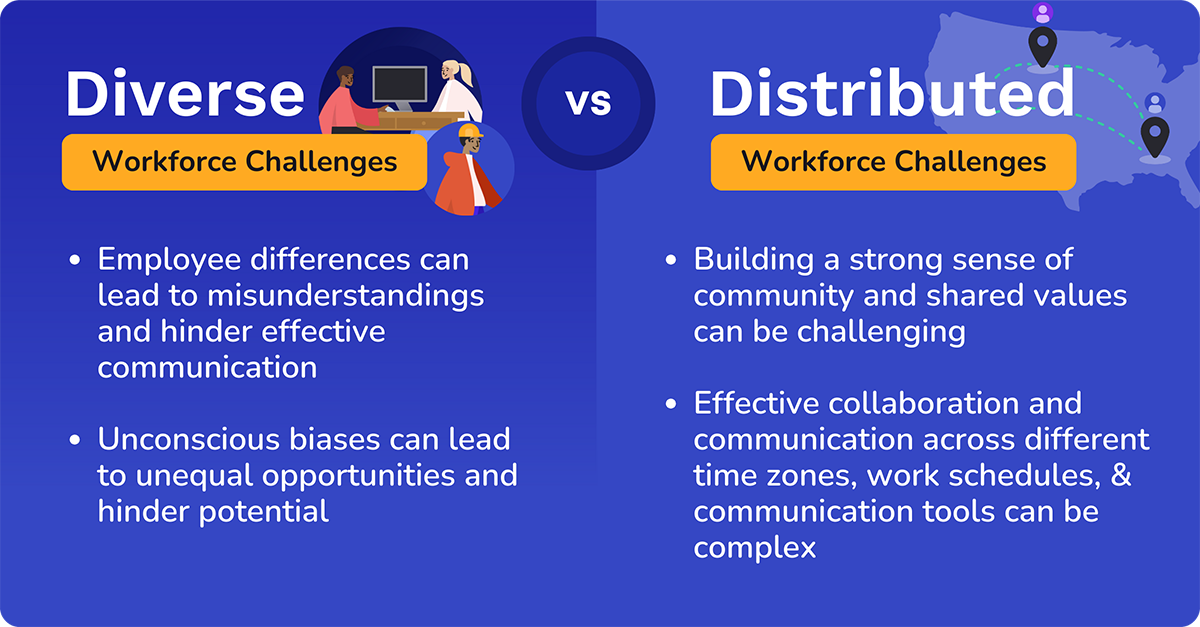
Before we suggest our 10 strategies for engaging a diverse, distributed workforce — the first of which focuses on communication — let’s explore a few of Maddy’s best communication practices for diverse, distributed workforces. These are the result of the feedback she’s got from comms teams over time.
“I hear a lot of comms teams talk about how they are creating multiple versions of comms campaigns to fit the various mediums/preferences of employees … and it’s so very, very time-consuming. It involves long-form text, an email comms, a highlight reel, a version that fits on their rotating banner on their intranet homepage, a version that can be used for cascading messages and digital signage, and so on.”
Ensure leadership messages and key initiatives are using inclusive language. Maddy cites a funny example from American Airlines whose slogan Fly in Leather translates in Spanish to “fly naked.”
“Although this is more of an advertising snafu, you can see how easily an internal campaign can be twisted if translations are not taken into consideration appropriately.”
What if your goal is to have your comms translated into multiple languages to help serve your global workforce, but your budget doesn’t allow you the flexibility to hire a translation service for all of your comms? This, says Maddy, is when can you supplement “good enough” translation services either through AI or automated systems to help you get to 80% vs putting a kibosh on the entire initiative because it’s not getting you to 100%. “Don’t let perfection stand in your way of taking even baby steps in the right direction.”
When publishing video or audio content, always pair it with a complete transcription. There are PLENTY of free or very cheap tools that you can run an entire video or audio file through, and it will automatically transcribe for you.
“Let machine learning and automation be your friend,” says Maddy. After all, “a single person or even an entire team can’t curate an entirely personalized experience for each employee, but technology can help you get closer to that.”
Start by identifying the need-to-know vs the want-to-know information. Then try to ascertain when the best time will be for employees to receive it. There may be times when deadlines or important announcements (like management changes) determine when comms must be sent out.
But Maddy’s message is to put employees first — whenever you can.
No one tool, system, or channel will ever provide you with 100% success in disseminating your comms. Instead, look at your various systems, tools, and channels as individual components that build and support each other.
When customers say a mobile app failed, Maddy asks how many employees used it daily or weekly. “It’s more about the depth of your employee's usage of the best systems for them,” she says.
When creating a digital asset version of a long-form text or important campaign, generate a dynamic QR code to publish on digital signage. Alternatively, post it in the break room’s “corkboard”.
“After Covid and the insurgence of restaurants switching to a more digitally friendly menu format, more people know what to do with QR codes than ever before. Plus, there are PLENTY of free QR code generator sites out there!”
We all need input from other people. So, Maddy suggests creating a group of “comms champions” from some of your most prominent diversity groups. Hold monthly or quarterly meetings to get their input on various campaigns and strategies. “Build their advocacy, and have an insider look into how employees can be better reached/heard. Have them submit content or assist in the overall process. Gives them autonomy, and they immediately become an advocate and trusted partner.“
Added to these best practices, you should also establish robust communication channels and regular check-ins to ensure all team members are aligned and informed. Be sure to also implement advanced distributed workforce compliance to protect sensitive information across all remote locations.
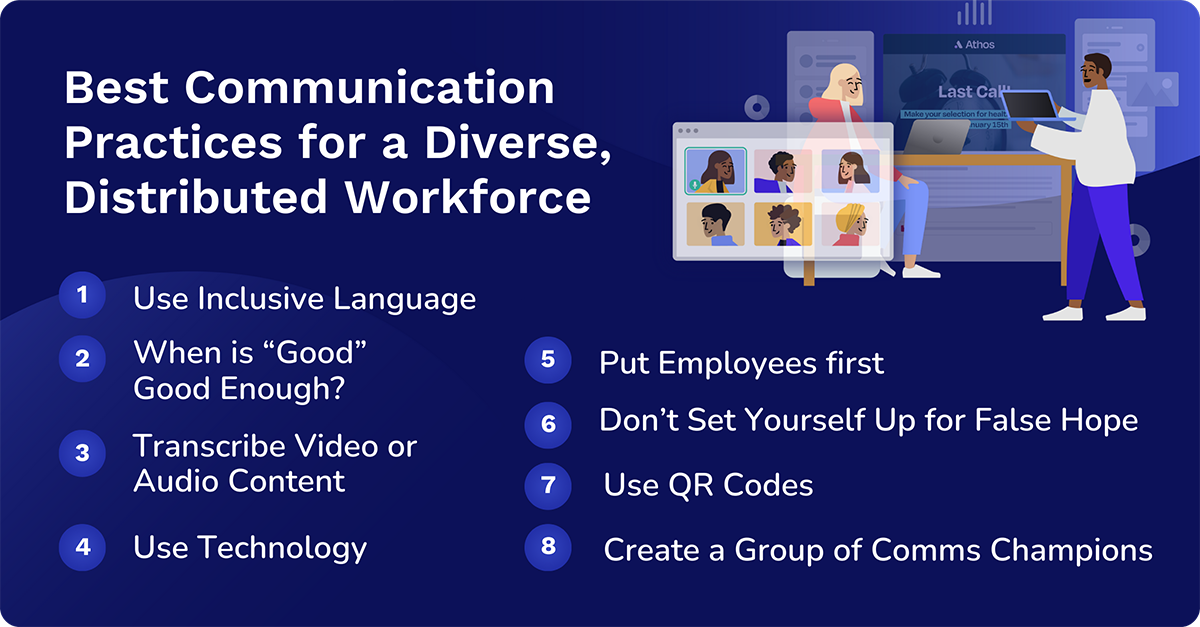
Communication is critical in a distributed workforce. Regular check-ins and continuous feedback between managers and remote team members ensure that everyone is on the same page. Utilizing smart communication software can facilitate these conversations, ensuring that all discussions are trackable and accessible.
Leveraging collaborative technologies is a must to support a distributed workforce effectively. Tools like Google Workspace enhance document collaboration. Cerkl Broadcast can streamline communication, ensuring that each employee remains informed and integrated within the broader team.
Flexibility is the cornerstone of a successful distributed workforce model. By accommodating time zone differences and personal work preferences, organizations can boost productivity and employee experience. A truly flexible work arrangement acknowledges the diversity in work and social contracts of remote and on-site teams.
Remote workers thrive on recognition and rewards just as much as their office-based counterparts. Digital platforms that highlight achievements and milestones can help promote a sense of achievement and belonging amongst distributed teams, reinforcing their value to the organization.
Continuous learning is vital in a distributed work environment. Offering remote team members access to online courses and certification programs not only enhances their skill sets but also demonstrates the organization’s investment in their career growth.
The lack of a central office shouldn't hamper team bonding. Virtual team-building activities, such as online escape rooms or trivia games, can foster social interaction and team cohesion. All of these are critical components of a healthy work environment.
Encouraging social connections among distributed workforce members can lead to more robust collaboration. Using social channels or virtual coffee breaks can help remote workers feel less isolated and more connected to their colleagues. The water cooler plays an important role on site.
Clear goals and expectations are indispensable in diverse and distributed teams. They ensure that despite the lack of physical presence in an office space or differences, every team member understands their responsibilities, contributing to the team’s overall objectives.
Leaders of distributed teams need autonomy and authority to make day-to-day decisions. Empowering them not only speeds up processes but also builds a leadership pipeline that is sensitive to the differences of managing a remote workforce.
The absence of a physical commute in a remote work scenario does not necessarily mean a better work-life balance. Companies should advocate for and implement wellness programs to help remote employees manage their time and stress effectively. It is also important to recognize the different needs of different people.
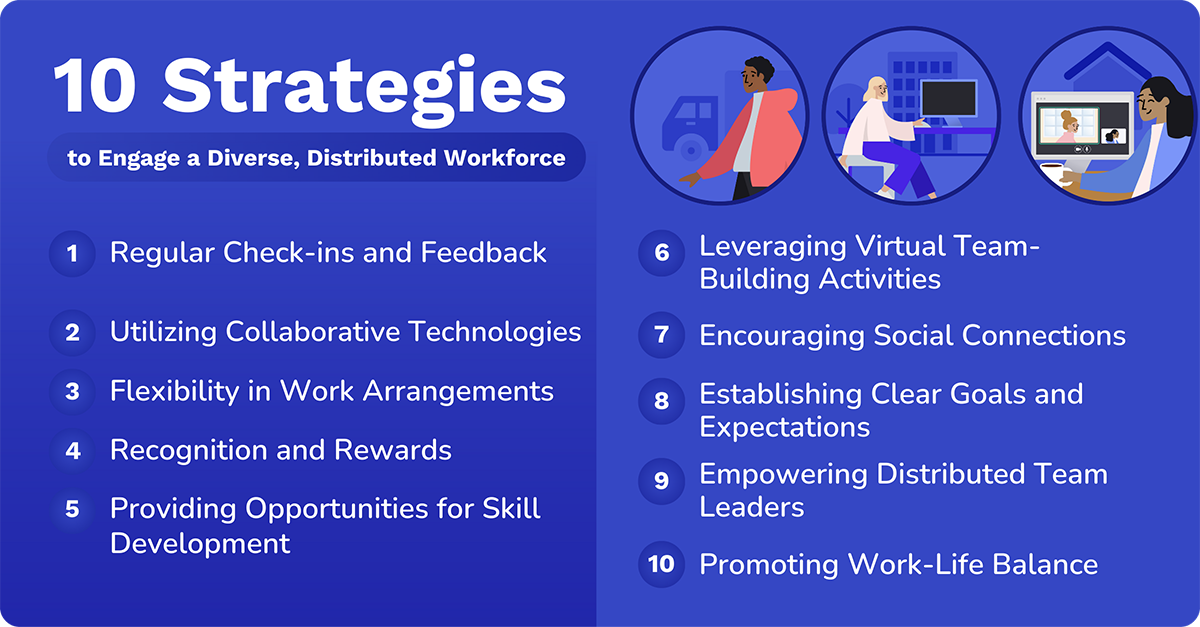
These are our suggestions. They are not the only options. Be sure to thoroughly evaluate workforce tools before you commit to them.
For seamless communication within a distributed team, Cerkl Broadcast stands out above the rest. Its ability to personalize internal communications means each remote team member receives relevant information, enhancing the employee experience and ensuring everyone stays informed.
Keeping projects on track requires robust project management tools like Asana. Its intuitive design and versatile functionality make it a popular choice for remote teams, allowing them to collaborate effectively, regardless of their physical location.
Google Workspace facilitates real-time collaboration across distributed teams. With features like document sharing, editing, and live commenting, it significantly enhances productivity by enabling team members to work together seamlessly, no matter where they are located.
Video conferencing has become indispensable for remote teams, and Zoom is a leading solution. Offering reliable video and audio quality, it connects distributed team members for meetings, brainstorming sessions, and one-on-one discussions, simulating an in-office experience.
Dropbox simplifies file sharing and storage for remote teams. Its secure platform ensures team members have access to necessary files anytime, anywhere, fostering a collaborative and efficient work environment without the need for a physical office space.
Cerkl Broadcast is the ideal platform to help you engage a diverse, distributed workforce. Here’s why:
It is also hugely versatile, making it super-easy to get to deskless employees and those in faraway places. It really doesn’t matter where they are. And if they don’t have email? No problem, Cerkl Broadcast is set up to cater to them as well. The Broadcast platform provides a seamless solution for the full spectrum of employees.
How successful is your existing internal communications strategy? Is it driving employee engagement? We suggest that you take our quick, free internal communications audit today. It may be enlightening because it will highlight the strengths and weaknesses of your current plan. It will also indicate areas for improvement to boost employee engagement.
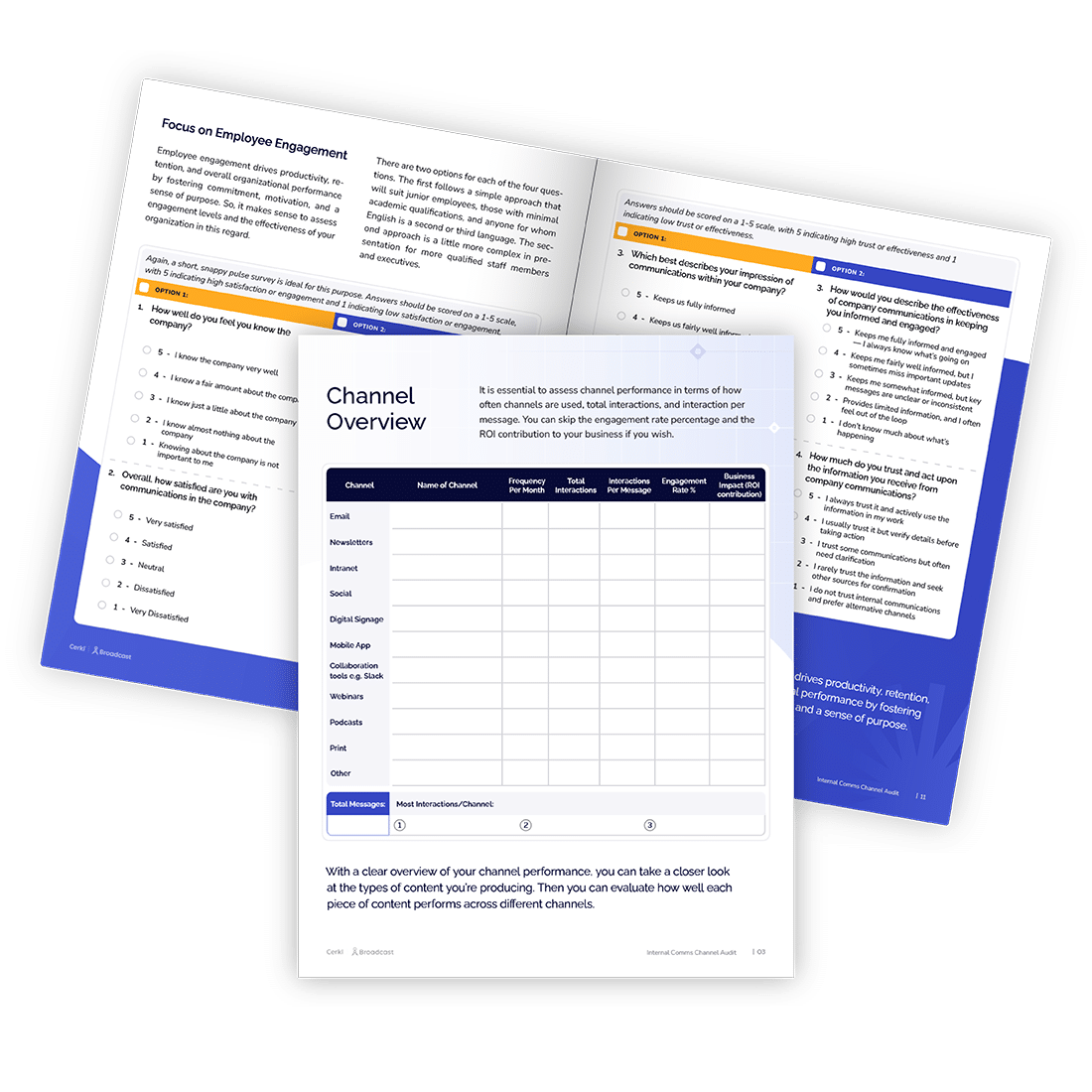
Upgrade your company’s internal comms to enhance employee communication
What is a distributive workforce? A distributive or remote workforce is one where employees are spread out across various locations. They may work remotely or in different offices.
What is an example of a distributed workforce? An example of a distributed workforce is a technology company with employees working from home in different cities or countries, collaborating virtually. Similarly, a software development company may have a distributed team working from different countries. They would collaborate online and use video conferencing for meetings.
What are the benefits of a distributed workforce? The benefits of a distributed workforce model include increased flexibility, access to a wider talent pool, reduced overhead costs, and improved work-life balance for employees. Companies can hire individuals with the best skills regardless of location, and employees often enjoy greater autonomy and work-life balance.
What is the difference between remote and distributed workforce? The main difference between a remote and distributed workforce is that a remote workforce typically works from home or a single location, whereas a distributed workforce operates from multiple locations, possibly across different regions or countries. However, a remote workforce may be distributed.

Upgrade your company’s internal comms to enhance employee communication